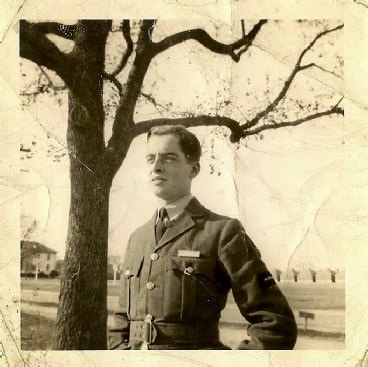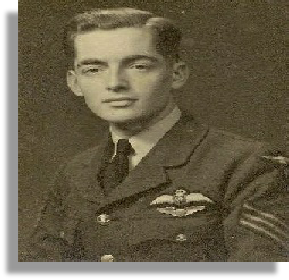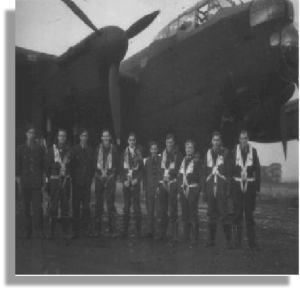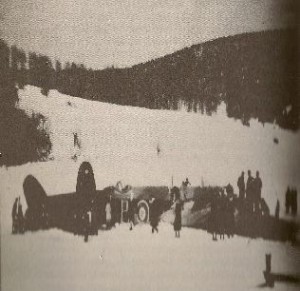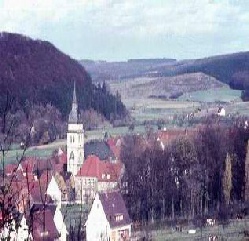This is a dedicated page in the honour of Frank Law
Frank Law’s name crops up on several occasions in Jim Ives’ flying log-
Frank was born in 1923 to parents Frank and Charlotte (Lottie) Law, his birth was registered in the Anderston district of Glasgow. Frank had an elder brother John Alexander, born in 1921, the pair being known in the family as ‘Jackie’ and ‘Frankie’. The boys’ father was a policeman by profession.
Frank Law’s service number suggests that he enlisted in the spring of 1941 at the Edinburgh Recruiting Centre (1346759 falls within the 1340000-
This photograph is of Law was taken during ‘acclimatisation’ with his 42G colleagues at Maxwell
Field, Montgomery, Alabama, before embarking on his AC Primary training course. It is assumed that all went relatively smoothly as Frank’s name does not appear in any of the relevant USAAF accident report lists for that period. He probably graduated on 5th August. 1942 as did Jimmie Ives.
He was neither retained as an instructor nor commissioned but returned to the UK as a Sergeant pilot, again, in all probability experiencing the ‘Awatea’ incident and sailing from New York on 5th September, disembarking from the ‘Queen Mary’ on 11th September 1942 .
Newly graduated sergeant pilot Frank Law sporting both RAF and USAAF wings, the portrait taken in the Sauchihall Street studio of W Elsmore.
During the final week of 11(P)AFU course on 5th December 1942 at RAF Condover, a satellite airfield of RAF Shawbury, Sgts J Ives and F Law shared pilots ‘ duties on an instrument flying exercise.
On 4th April, Jim Ives’ first day at 27OTU, Ives and his crew had been practising low flying and circuits and landings. That evening another pilot undertaking a night flying test at RAF Church Broughton found himself in difficulties. Wellington III BK508 took off from Church Broughton on a NFT on a crosswind approach at 900feet and was preparing to land when the starboard engine failed. The pilot Sgt F Law was unable to maintain height and force-
Sgt White had been trapped in the fuselage of the burning Wellington and there was speculation at the time that that he had been running up and down the interior trying to find a way out. The main access into/out of the Wellington was via a hatch below the bomb-
Ives is thought to have witnessed the incident as Geoff Yates (Jim’s B/A) recalls that Jimmie was particularly cut-
It appears that Frank Law was posted to another Operational Training Unit after the crash as a researcher of one of his 103 Squadron crew colleagues cites a ‘crewing-
RAF Wymeswold at the end of June 1943. Having completed a four week duty there Law and crew were posted initially to 1656CU at RAF Lindholme on 23rd July and moved on five days later to 1662CU at RAF Blyton to convert to four-
Law’s crew at 1662CU is thought to have been:-
F/Sgt. Frank Law – Pilot – RAFVR 1346759 from Glasgow,
Sgt. Robert B Stocks – F/e –
Sgt. David J. Mackay – Navigator –
F/Sgt. Thomas L.H. Kay –
originally from Easington, Co. Durham.
Sgt. Ronald S. Johnstone –W/Op/Air Gunner –
Sgt. Cyril Plampton –
Sgt. Jack B. Daniel –
On 29th August, while at RAF Blyton Sgt Law and his crew accompanied Ives and Sgt Yates (or vice versa!) on a Mk XIV bombing exercise, both pilots at the controls for an hour each.
Frank Law (fifth from left), crew and ground crew – date unknown (the uniform of the crewman extreme right appears slightly darker than his colleagues – suggesting RAAF, so may be F/Sgt Thomas Kay?
After conversion to heavy bombers Frank Law was posted to 103 Squadron where he experienced a number of crew changes:-
Sgt Jack Bays Daniel (a/g) was lost flying with F/Lt Francis T Hopps on 2nd December 1943.
F/Sgt Thomas Leslie Hobson Kay RAAF (bomb-
Sgt Robert Blyth Stocks (f.eng.) was killed flying with F/Sgt McMahon on the 24th December 1943 raid against Berlin.
Law’s original navigator Sgt Mackay dropped out after four operations, for the last two he had apparently suffered sickness during the flights. To his credit Sgt Mackay resumed operations with 101 Squadron but lost his life on operations in February 1945.
Whilst the Ives crew had suffered their own set-
1st Oct 43 to Munich. Early return U/S compass and Gee.
4th Oct 43 Ludwisghafen. Early return. Sick navigator.
18th Nov 43 Berlin Did not take off. Reason unspecified.
Sgt Ken Flowers joined W/O Graham’s crew list for the Berlin sortie on 22nd November 1943 when Graham experienced another early return with an unserviceable engine.
The following evening a squadron aircraft swung on take-
A problem with the air speed indicator led to Graham returning early from the next Berlin operation on 26th November. W/O Graham’s crew were then transferred to 103 ‘s sister squadron 576. Having completed the operation against Berlin on 2nd December, the crew were involved in another abortive sortie the following night, suffering another engine failure. After this date W/O Graham disappeared from 576 Squadron.
Navigator Sgt Ken Flowers joined F/Sgt Frank Law for a consistent run of operations from 5th January 1944:-
5th/6th January in JB745 – Stettin
20th/21st January in JB278 – Berlin
21st/22nd January in JB278 – Magdeburg
27th/28th January in ND408 – Berlin
28th/29th January ND408 – Berlin
30th/31st January in ND417 – Berlin
15th/16th February in ND408 – Berlin
19th/20th February in ND408 – Leipzig.
When flight engineer Donald Bell arrived at Elsham Wolds in early December he flew with P/O Len Young’s crew on operations from 16/17th December until he too joined F/Sgt Law’s crew for the Berlin sortie on 20th/21st January.
On 19th February 1944 P/O Frank Law’s crew appeared on the Battle Order for an operation against
Leipzig. The crew of Lancaster ND408 PM-
W/O F Law –
Sgt Donald Charles Bell –
F/Sgt Kenneth William Flowers – navigator from Forest Gate, Essex
Sgt C J D Baldwin –
Sgt Ronald Sydney Johnstone –
Sgt Albert Henry Daines –
Sgt Alfred John Bristow –
ND408 took off from Elsham Wolds at 23.25 and was one of four 103 Squadron Lancasters which did not return, one of a bomber force of 823 aircraft detailed of which 78 aircraft were lost.
Initial reports from the German Authorities Totenliste 204] coming to the squadron via the International Red Cross Committee outlined that a squadron aircraft had been shot down on 20th February 1944. Three members of the crew were named together with two unknowns who had been buried on 21st
Peter Hinchliffe’s book ‘The Other Battle’ includes a photograph of a 103 Squadron Lancaster after it was shot down. The caption reads:-
In December 1947 investigations by No. 24 Section, No. 4 Missing Research and Enquiry Unit RAF (Germany) revealed the circumstances of the loss of ND408. It transpired that at approximately 06.00hrs on 20th February 1944 a RAF Lancaster crashed in a field just south of the village of Atteln.
The aircraft had apparently been hit by flak which had damaged its tail and adversely affected the steering. The aircraft had not burnt and the bodies of five airmen were recovered.
Two of the crew had parachuted safely from the aircraft and been taken prisoner. Those who died were buried in the village cemetery.
It is conceivable that the crew had been trying to navigate home but knowing they had no chance of reaching the UK were searching for a suitable spot to crash-
The village of Atteln
The bodies of the five crewmen were exhumed from the village cemetery and reverently re-
It seems that Frank Law’s commission to P/O (171852) status had been approved just before his death, the promotion was gazetted on 17th March 1944, effective from 13th February 1944.
Tragically for the family Frank Law’s elder brother John, who also held a commission in the RAF was killed in the Far East on the day before ‘VJ-
Flight engineer Donald Bell passed away in December 2013. A different version of the loss of ND403 has now come to light from Donald Bell’s family. It transpires that four members of the crew had been killed instantly when ND408 was hit by fire from a night-
A survivor’s account of what happened.
John Proctor

